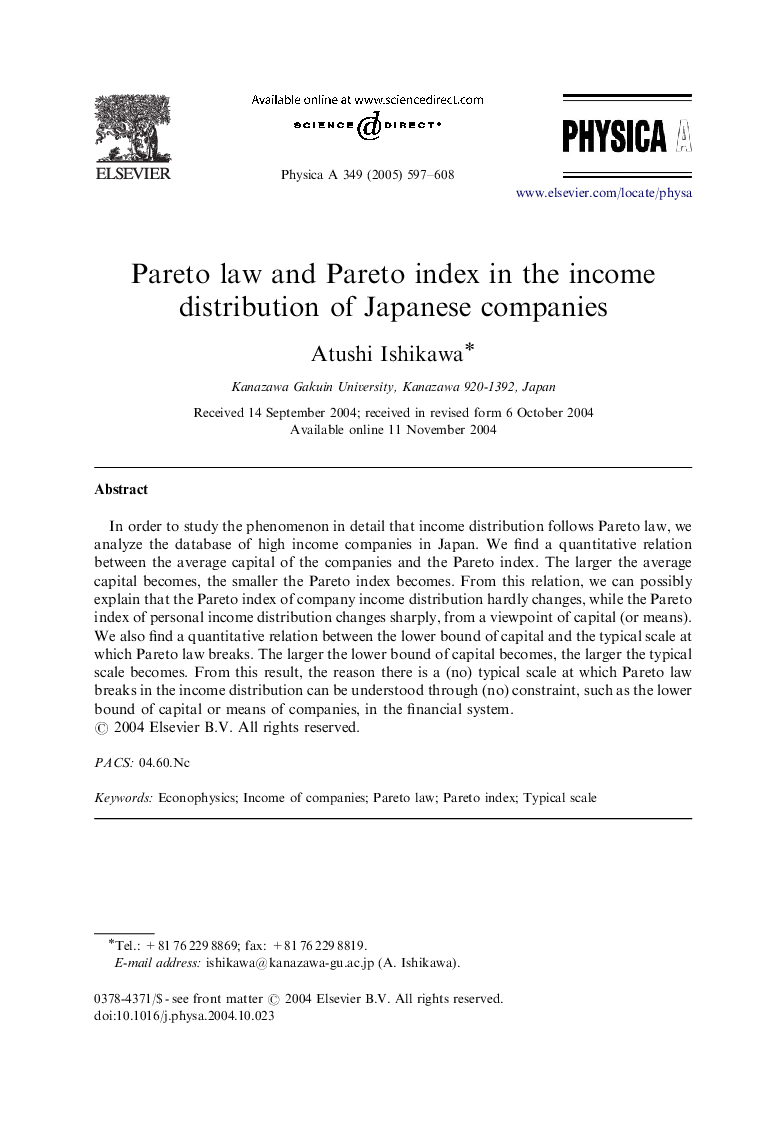| Article ID | Journal | Published Year | Pages | File Type |
|---|---|---|---|---|
| 9727854 | Physica A: Statistical Mechanics and its Applications | 2005 | 12 Pages |
Abstract
In order to study the phenomenon in detail that income distribution follows Pareto law, we analyze the database of high income companies in Japan. We find a quantitative relation between the average capital of the companies and the Pareto index. The larger the average capital becomes, the smaller the Pareto index becomes. From this relation, we can possibly explain that the Pareto index of company income distribution hardly changes, while the Pareto index of personal income distribution changes sharply, from a viewpoint of capital (or means). We also find a quantitative relation between the lower bound of capital and the typical scale at which Pareto law breaks. The larger the lower bound of capital becomes, the larger the typical scale becomes. From this result, the reason there is a (no) typical scale at which Pareto law breaks in the income distribution can be understood through (no) constraint, such as the lower bound of capital or means of companies, in the financial system.
Keywords
Related Topics
Physical Sciences and Engineering
Mathematics
Mathematical Physics
Authors
Atushi Ishikawa,
